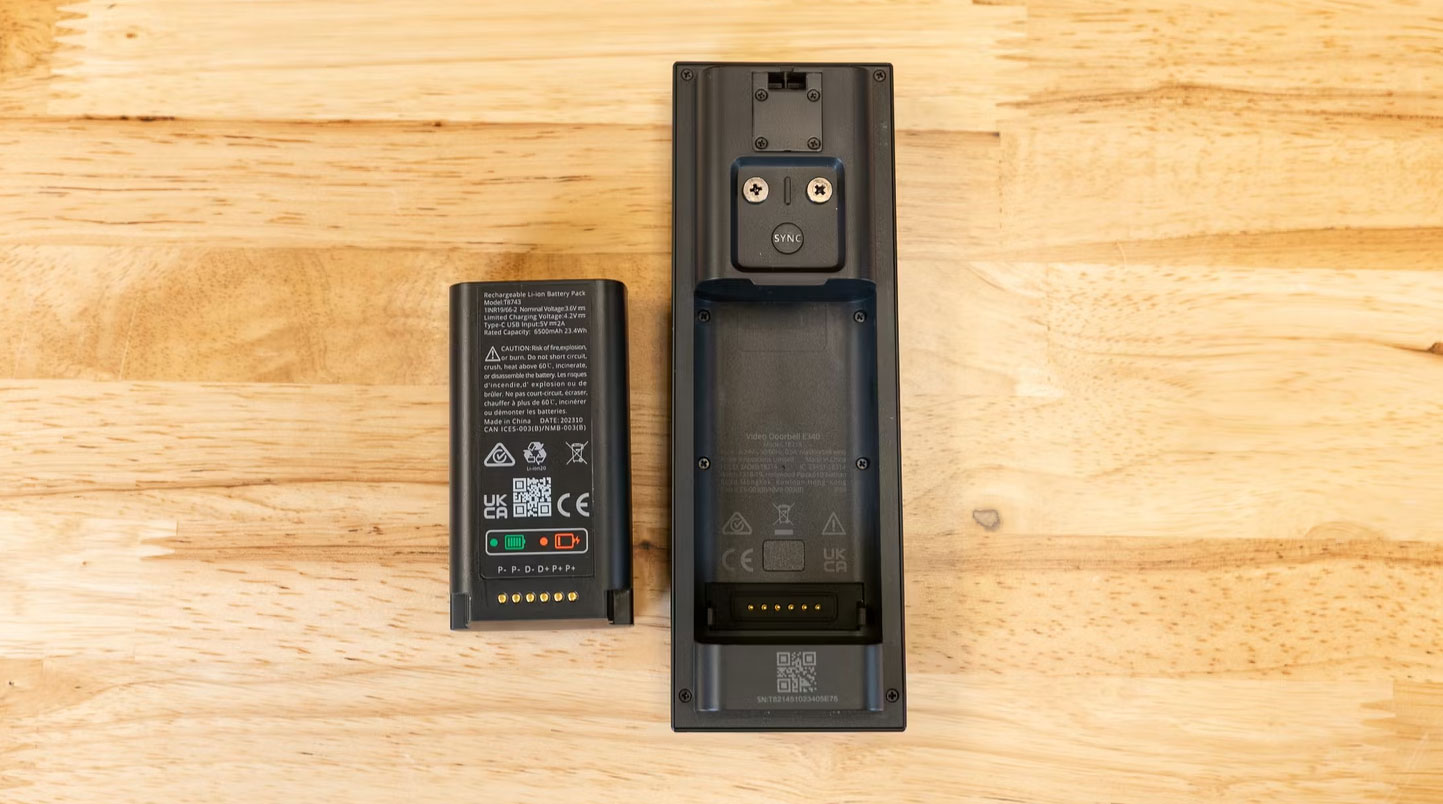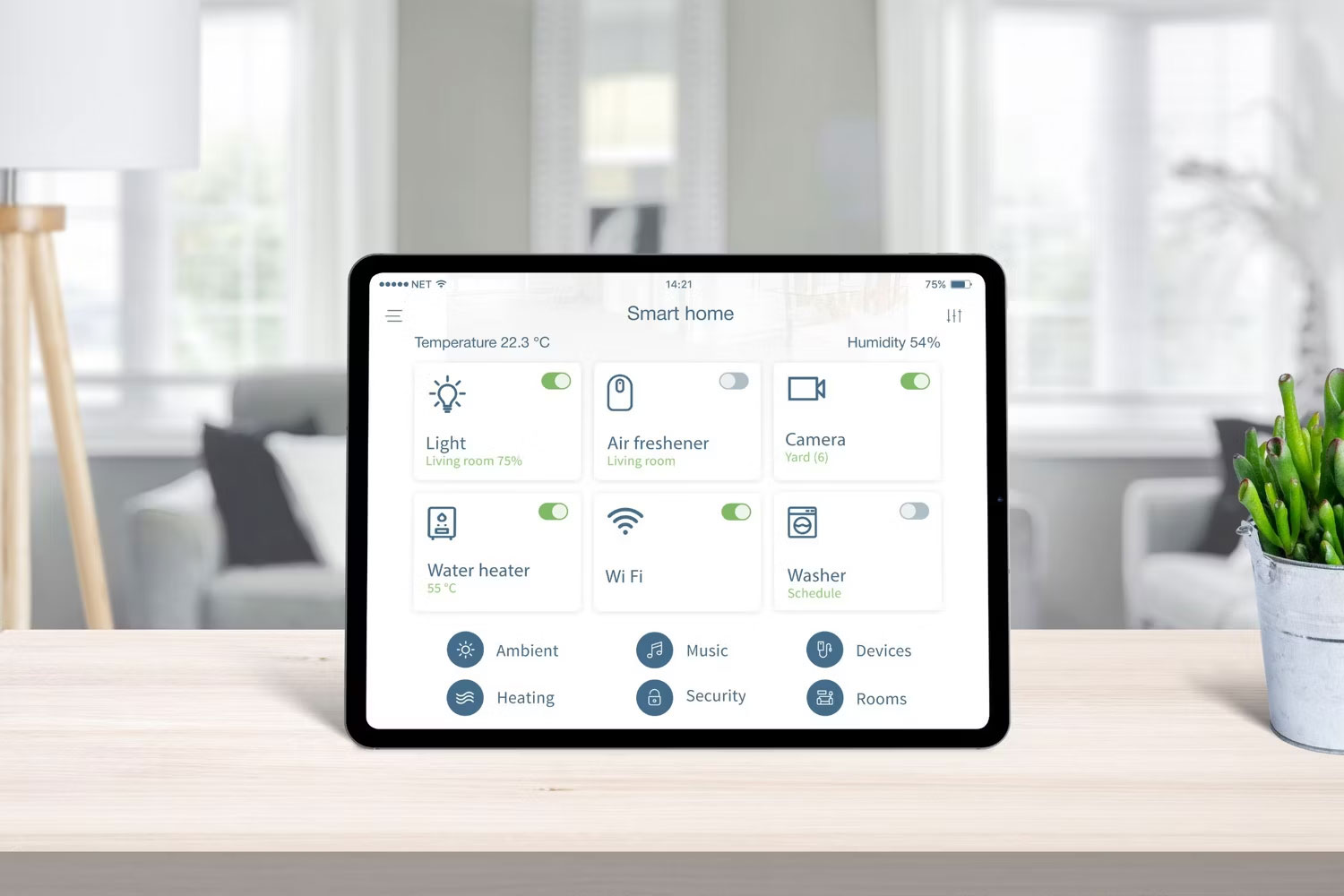8 things to check when buying a smart doorbell
Choosing the right product requires a bit of research and some indispensable features. Here is a list of 8 things to keep in mind when buying a smart doorbell.
1. Security track record

The first thing to consider is the company's security record. Given the nature of the data being recorded - video of your home, surroundings, and maybe even your family - it's important to know if the company has a history of security breaches or vulnerabilities security or not.
There are too many stories of big brands experiencing hacking incidents, where unauthorized users accessed live feeds or archived footage. It's a nightmare scenario that everyone wants to avoid. A quick search online can reveal any past problems the company has encountered.
2. No registration required
Many people don't like paying a monthly fee just to use something they already paid for. Some smart doorbells require a subscription for video storage or remote monitoring, but choose cameras that don't require a subscription.
This often means paying more to buy a camera with local storage or other features out of the box. But when you calculate based on the average usage time of a smart doorbell, paying upfront is almost always better than being locked into a monthly payment plan.
3. Video quality

Smart doorbells are only as good as their video quality. You need to know whether the camera can record clear, detailed videos both day and night before deciding to buy. Check the specifications on Amazon and then look through the reviews to confirm whether the specifications match the user experience.
Pay special attention to resolution (1080p is the minimum), frame rate (higher the better), and HDR support. Night vision is another important factor. Also, check to see if the camera is effective in complete darkness and consider the field of view to determine how much of the porch and surrounding home the camera can see. YouTube will be helpful in researching certain products.
4. Clear two-way audio
Two-way audio is an indispensable feature for many people. This means that smart doorbells have both a microphone and speaker, allowing you to communicate with whoever is at the door, for example telling a delivery person to leave a package at the gate without having to open the door.
Two-way audio is standard on most video doorbells, but quality may vary. Watching video reviews where sound quality is tested in a variety of situations is one way you can make sure you're making the right choice.
5. Local storage option
While cloud storage is convenient, appreciate doorbells that offer local storage options. For example, an SD card slot is a big plus. It's great for backup storage or if you're not ready to set up a full NVR (Network Video Recorder). Plus, local storage is faster to access and doesn't depend on an Internet connection.
Local storage is convenient for people who want to avoid cloud services for privacy reasons. Local storage allows you to keep footage on your property, reducing the risk of third party access.
6. Power source

The power source of a smart doorbell is an important consideration that can affect both installation and maintenance. Battery-powered models are convenient because they are easy to install - no need to fiddle with wiring. However, they need to be recharged regularly, which can be annoying depending on how often the camera is activated.
In contrast, wired models are an install-and-care-free solution, but professional installation skills are required. Always consider your home setup and the amount of effort you're willing to put into camera maintenance when choosing between a wired or wireless smart doorbell.
7. Weather resistance
A durable, weather-resistant camera is a must, especially if you live in an area with harsh weather conditions. Make sure the camera can handle different weather conditions. Checking your camera's IP rating can help you see how well it will withstand the elements.
An IP rating of IP65 or higher is best, indicating the camera is protected from dust and splashes of water. For those in colder climates, it's also a good idea to check the operating temperature range to ensure the camera doesn't become damaged in freezing conditions.
8. Integrate with existing smart home ecosystem

It would be remiss not to consider how the new doorbell fits into your existing smart home ecosystem. Some smart doorbells work better in certain ecosystems, so it's worth checking to see if your potential doorbell integrates well with other devices. Life is so much easier when everything works seamlessly together.
If you're heavily invested in Amazon Alexa, Google Home, or Apple HomeKit, you'll want to choose a smart doorbell that integrates best with these platforms. Integrations let you do things like view your doorbell's video feed on your smart display, trigger automations based on motion detection, or receive alerts on your phone.
When choosing a smart doorbell, it all depends on what works best for you and your home. These 8 points will get you on track to finding the perfect match.
You should read it
May be interested
- 4 features not to be missed when buying a cheap 4K Smart TV
 people always try to save money when they can, especially when it comes to tech, but many people regret buying a cheap 4k smart tv.
people always try to save money when they can, especially when it comes to tech, but many people regret buying a cheap 4k smart tv. - How to check old laptop, test the machine before buying
 checking your old laptop when buying helps you evaluate the old laptop exactly, promptly detect the problem to fix. this is the secret of the old laptop buyer, providing the factors to consider, checking when buying old laptop, you pay attention.
checking your old laptop when buying helps you evaluate the old laptop exactly, promptly detect the problem to fix. this is the secret of the old laptop buyer, providing the factors to consider, checking when buying old laptop, you pay attention. - Things to consider before buying a security camera for your home
 security cameras are a great addition to any smart home. and if you're looking to add this technology to your home, here are some things to consider when purchasing a smart security camera.
security cameras are a great addition to any smart home. and if you're looking to add this technology to your home, here are some things to consider when purchasing a smart security camera. - Amazon acquired Ring, increased security for smart home products
 the reuters newspaper said amazon had just bought the company that specializes in ring smart home products for more than $ 1 billion.
the reuters newspaper said amazon had just bought the company that specializes in ring smart home products for more than $ 1 billion. - How to quickly and accurately check an old iPhone before buying
 the following article will show you how to check your old iphone before buying and still make sure you get the best quality iphone. stay tuned!
the following article will show you how to check your old iphone before buying and still make sure you get the best quality iphone. stay tuned! - Quick test to see if HDR on Smart TV is working
 hdr isn't always enabled automatically, but you can check for yourself with these quick and easy hdr tests.
hdr isn't always enabled automatically, but you can check for yourself with these quick and easy hdr tests. - 6 things to consider before buying a PS5
 if you're planning to buy a ps5, you should consider whether it's the right move for you.
if you're planning to buy a ps5, you should consider whether it's the right move for you. - Things to note when buying old laptops
 as the matrix of laptop manufacturers such as acer, hp, sony vio, lenovo is heating up the market with more luxurious models, higher configurations. however, the recent market is recognizing a new trend, a new direction for users to choose - buying cheeks
as the matrix of laptop manufacturers such as acer, hp, sony vio, lenovo is heating up the market with more luxurious models, higher configurations. however, the recent market is recognizing a new trend, a new direction for users to choose - buying cheeks - 6 mistakes when buying Smart TV
 watching tv is still a popular pastime, and what better way to immerse yourself in your favorite tv show or movie than on a brand new smart tv?
watching tv is still a popular pastime, and what better way to immerse yourself in your favorite tv show or movie than on a brand new smart tv? - How to thoroughly check old iPhone before buying
 there are plenty of tips to check out your old iphone before making a buying decision, but if you don't have a lot of experience and are prone to being deceived by your looks, you'll regret it sooner or later.
there are plenty of tips to check out your old iphone before making a buying decision, but if you don't have a lot of experience and are prone to being deceived by your looks, you'll regret it sooner or later.










 Instructions for downloading documents from Google Docs
Instructions for downloading documents from Google Docs Why does opening MOV file have no image? How to fix?
Why does opening MOV file have no image? How to fix? Shortcat - An app that makes it easy to use your Mac without a mouse
Shortcat - An app that makes it easy to use your Mac without a mouse How to watch Apple's iPhone 16 'It's Glowtime' event
How to watch Apple's iPhone 16 'It's Glowtime' event Zhueque, Xiaomi's keyless phone
Zhueque, Xiaomi's keyless phone How to block others from adding you to a Telegram group
How to block others from adding you to a Telegram group